Deciding what type of maintenance you need for your trees can sometimes feel confusing. For example, do you have a spruce tree in your yard and want to know if you should remove the cones? What benefits are there to doing this? Is it better to let nature take its course?
Well, we've extensively researched these questions and have the answers below.
In general, if you plan on keeping your spruce tree growing outdoors, it isn't necessary to remove its cones. However, if you want to use your spruce as a holiday tree inside or send it off to be purchased at a Christmas tree farm: doing this is a good idea.
When cones form on spruce trees, they often leave large gaps in the foliage once they fall. Of course, this won't be a problem for outdoor trees, but it can be unpleasing aesthetically for indoor decorative spruces.
As we start this article, we will cover whether you need to remove the cones from a spruce tree or if it's okay to let them be. Whether you're new to this species or have a few in your garden, we're here to help! Let's dive right in.
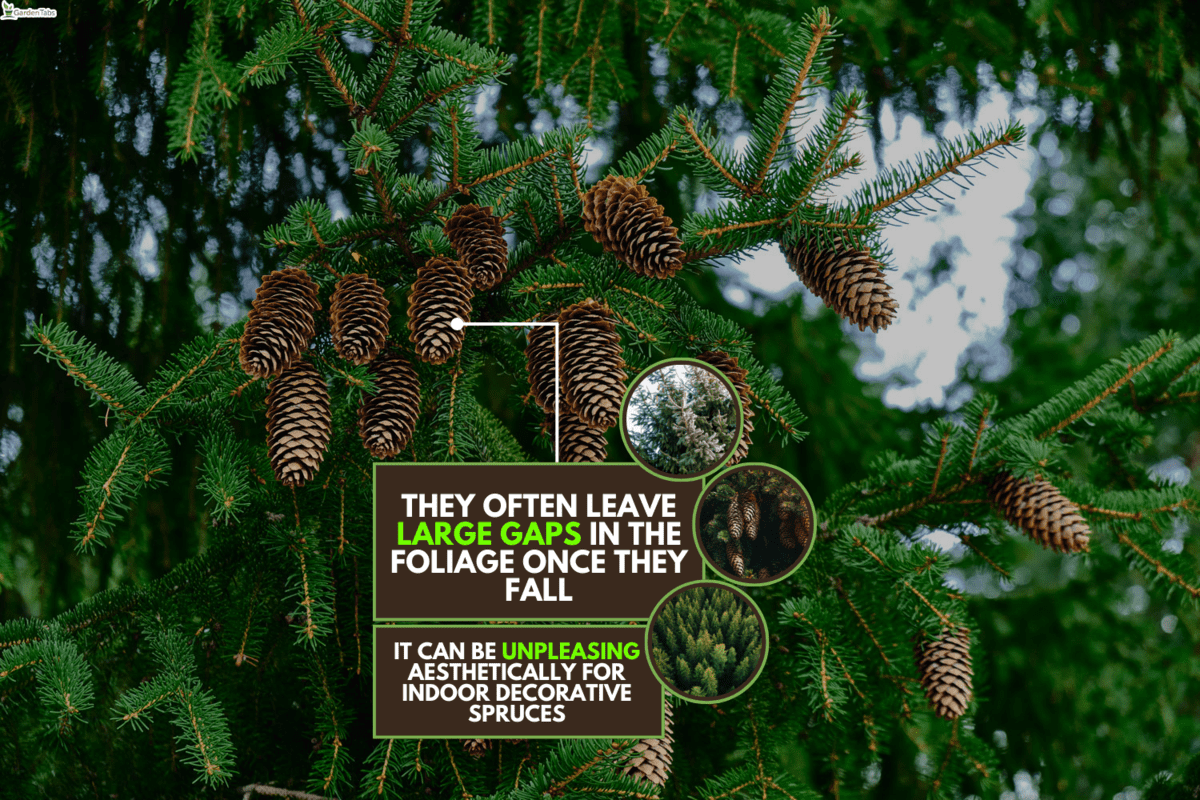
Do You Need To Remove The Cones From Spruce Trees?
As long as your spruce tree stays outside and alive, there isn't much need to remove the cones. As we mentioned, many people with this tree species allow the cones to form and fall if they don't plan to sell or cultivate their spruce tree.
Since your spruce tree will naturally produce cones and then drop them, this is a natural, healthy thing they are comfortable with. However, the cones on a spruce tree can leave big gaps once they fall off.
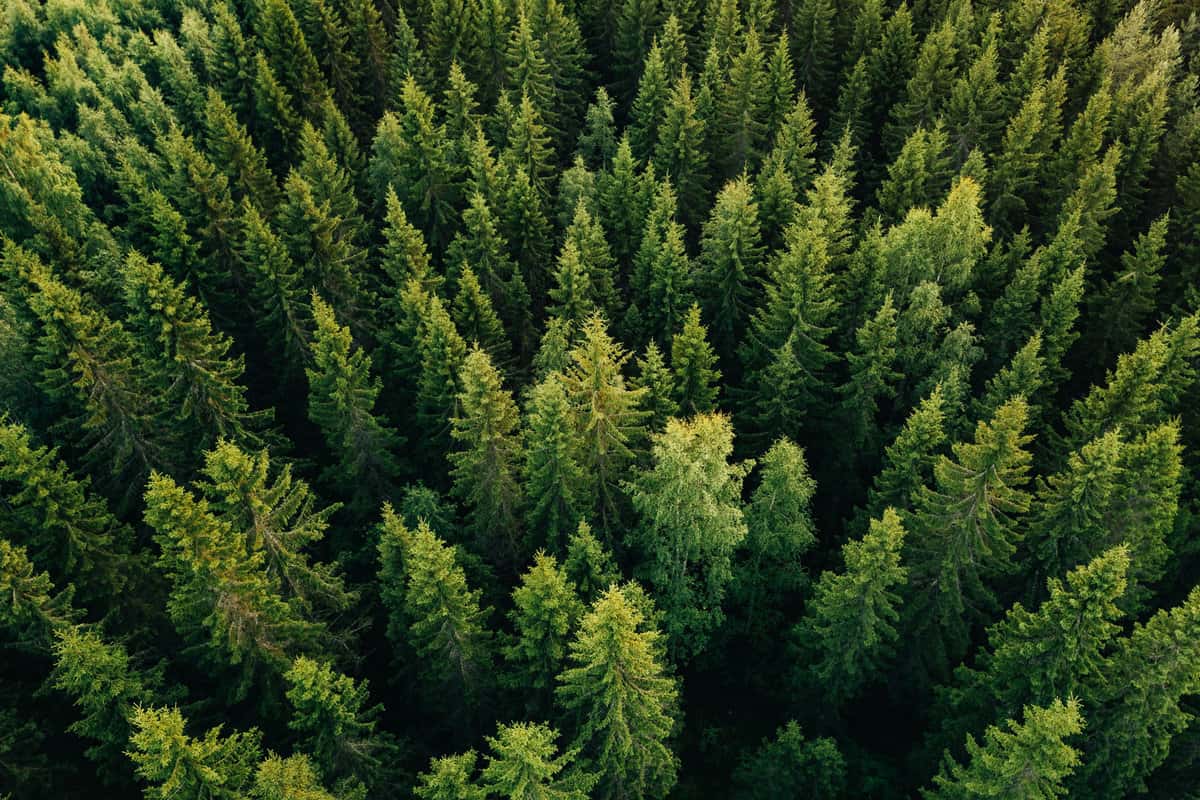
For people harvesting their spruce for personal or business use, that can be a problem. According to experts, many Christmas tree farms remove the cones from spruce trees to promote more branch growth and fullness.
This essentially shifts your tree's focus from the cone seeds to the branches and overall development. When you allow the cones to form on spruce, it does take some energy away from other sections.
Again, this is entirely natural, so unless you're using or selling spruce: feel free to leave it alone.
What Happens If You Remove The Cones From A Spruce Tree?
A few things can happen when you remove the cones from a spruce tree. Most times, your tree will be forced to shift its energy to other sections, including the overall foliage.
As we covered above, your spruce may see better growth and become thicker, so doing this is perfect for people wanting to harvest their tree.
On the other hand, removing the cones from your tree isn't required for it to be healthy. Remember, spruce trees and conifers generally do their own thing without needing much human interaction or attention.
Therefore, leaving your tree alone and letting the cones form and drop is entirely fine. Sometimes, letting nature take its course is the best policy for the trees in your landscape.
You can also collect the cones from your spruce and use them to make decor, so there are benefits to letting them form and grow. Removing cones also shouldn't harm your tree, so this is fine either way.
Why Does My Spruce Have So Many Cones?
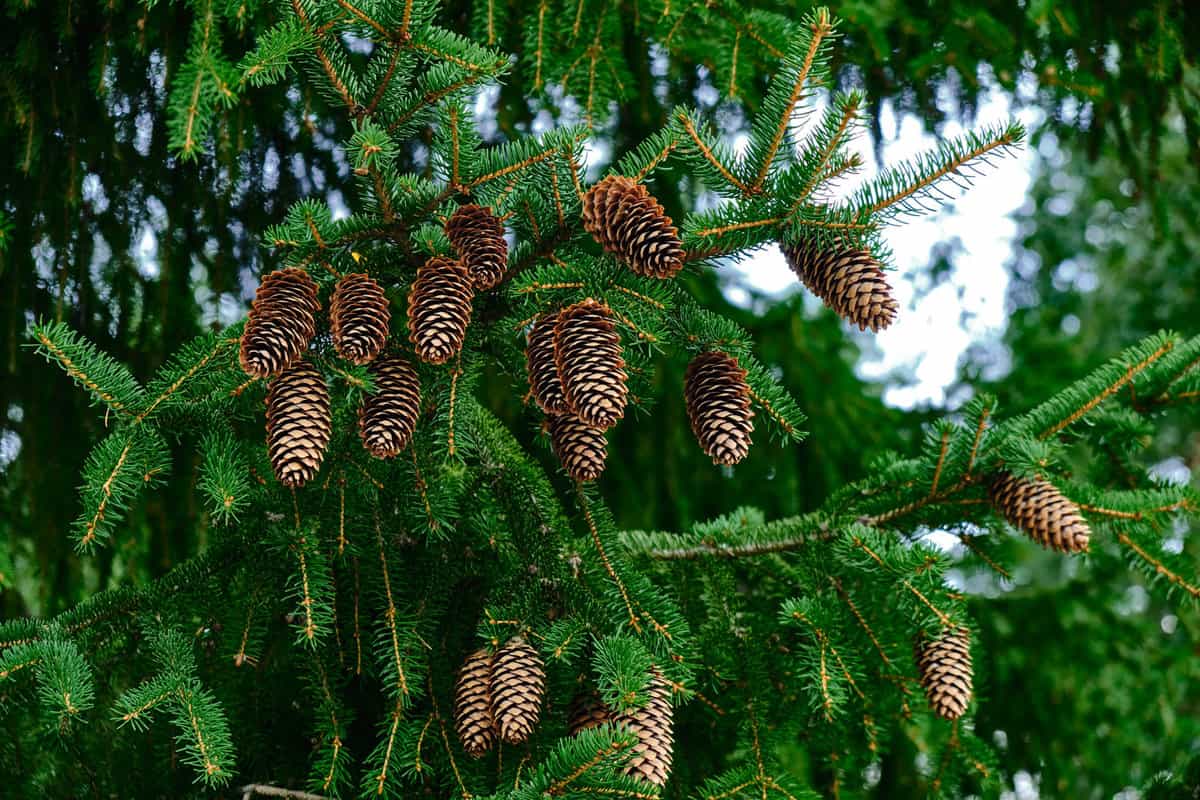
If you start noticing an abundance of cones on your spruce tree, this could be an indication of a health problem with your plant. Generally, too many cones forming on spruce trees are caused by drought and heat-related stress.
Your spruce will produce many cones to encourage propagation, leading to decreased growth in other sections. Since the cones are protective barriers for the seeds of conifers, your tree is essentially trying to make up for the poor conditions by over-reproducing.
According to Groundhog Landscaping, pine and spruce trees may also produce more cones than usual if the weather is dry and it doesn't rain enough through the spring, summer, and fall.
If you don't water your tree to compensate for the lack of moisture, that can also trigger too many cones. In this situation, we recommend giving your tree water during periods of drought to prevent a cone catastrophe in the fall/winter.
So, even though cones are normal for spruce, they shouldn't take over entire branches or sections. You can remove them if they become an issue for your landscape or tree.
When Do Cones Form On A Spruce Tree?
You can typically expect cones to form on spruce trees in two-year cycles. So, your tree will form tiny cones; over the next year or two, they should begin to take on the classic shape and size.
According to Michigan State University, most spruce tree cones will develop in the first year, taking on their mature size around the second year.
Therefore, you have plenty of time to remove them before they reach their full size and potential.
Additionally, seed-bearing spruce trees will usually start ripening their cones between August and September, which is a great time to pick them.
As we mentioned, you don't always need to pick the cones of spruce before they fall. Since many will remain on your tree for two years, they can add to the beauty of your plant.
Especially for wild or outdoor spruce, taking away their cones doesn't serve much purpose.
What Does It Mean If My Spruce Tree Doesn't Have Any Cones?
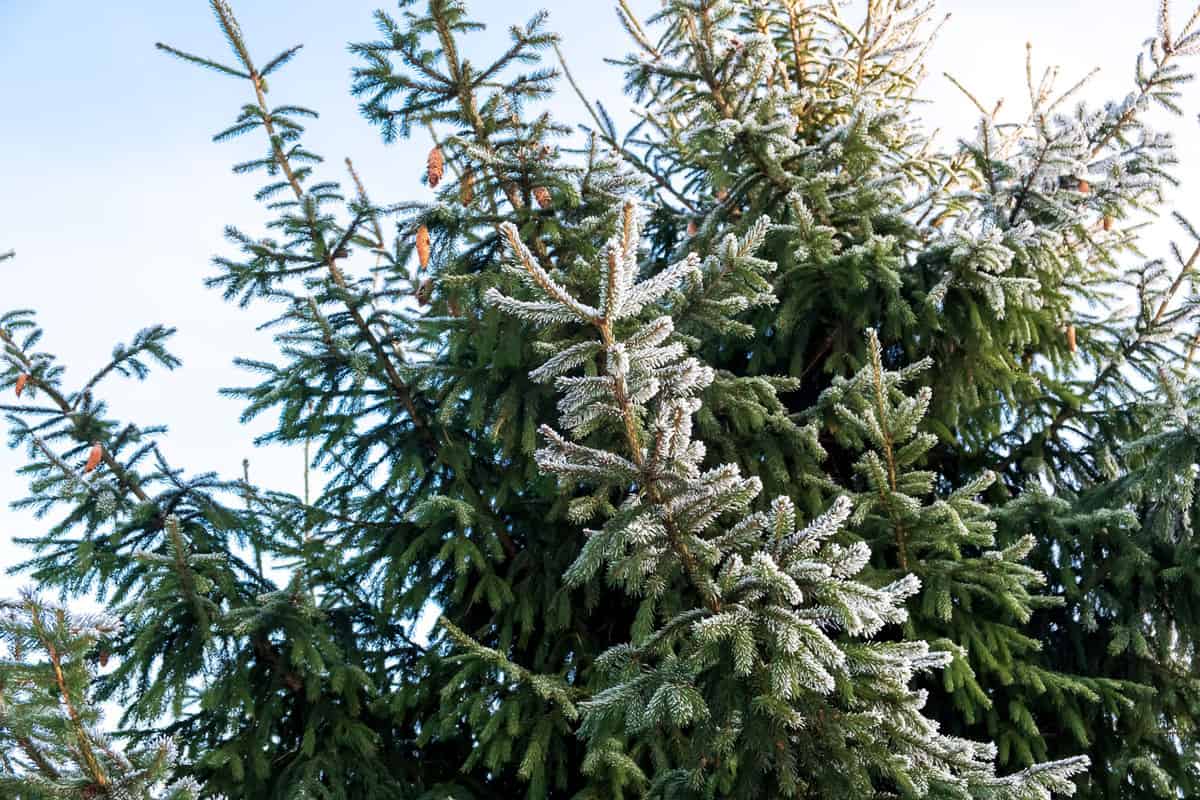
If you notice your spruce tree isn't producing cones, this could mean it's too young. Since cones require energy to form and grow on your conifer, spruce needs to be established enough to withstand this energy consumption.
For example, if you only planted your spruce 6-12 months ago, the chances of it producing cones are very slim. Older spruce without cones could also indicate an underlying health concern.
The primary duty of a conifer is to produce seeds in the form of cones. This encourages propagation and keeps your tree healthy and reproducing new spruces.
So, if your spruce suddenly stops making cones, that is a sign of concern. However, you also want to factor in whether your tree recently dropped its ripe cones.
Most spruce will do this in the fall, so if your tree recently dropped its cones, you need to wait until the spring to see more form. As we covered, spruce grow cones in two-year cycles.
Don't be alarmed if your spruce takes its time making new cones: this takes energy!
What Can I Do With Spruce Cones?
If you want to find new ways to use the cones from a spruce tree, there are many ideas to try. Of course, you can create festive decor with your spruce cones, add them to wreaths, spray paint fun colors, or even add them to your Christmas tree.
Furthermore, cones from spruce trees hold many health benefits. According to Gwich'in Social & Cultural Institute, you can use spruce cones to make a tea that relieves colds and helps maintain good health.
This is an ancient practice and has been adapted over the years. However, creating medicinal tea from the spruce cones may take time and patience, so hold in there.
As we mentioned, conifers all create cones. Therefore your spruce will make crunchy cones that you can harvest and even sell to those needing them.
The smell of cones is also very soft and comforting, so you could try making a fragrance with your spruce cones. The possibilities are endless!
Do Wild Animals Eat Spruce Tree Cones?
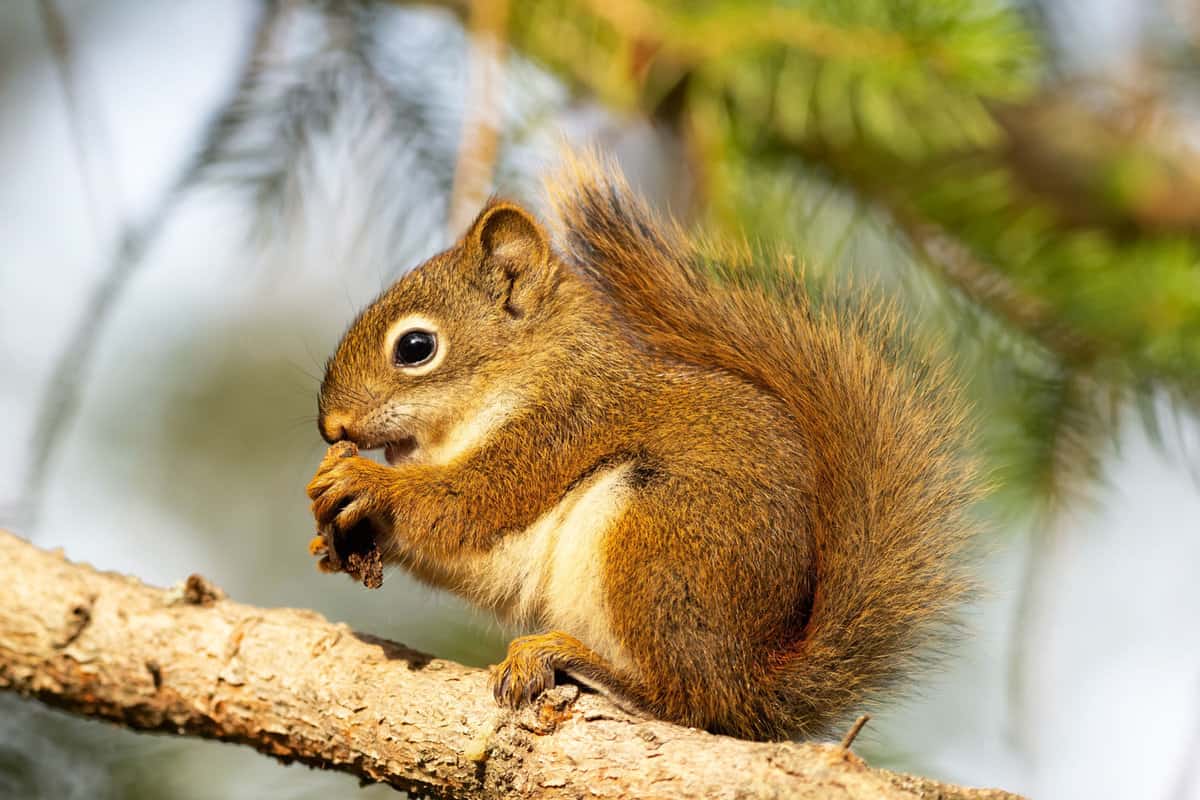
Yes, some wild animals do eat cones from spruce trees. According to experts, the red squirrel is a perfect example of a wild animal who loves the cones from a spruce tree, eating the fruits from Norway varieties.
Certain spruce varieties will also produce tiny berries in their cones, so they can be attractive to squirrels and other wildlife.
On top of squirrels, you can also expect nuthatches, finches, grosbeaks, chickadees, and other seed-eating birds to love the taste of spruce cones.
Again, you won't necessarily see your tree covered in wildlife all at once, but the more cones:, the more hungry critters will make their way over.
With that said, you shouldn't notice larger animals eat the cones from spruce, although that's not to say it's impossible. Since the fruit from certain spruces is very tiny, it generally appeals to smaller critters.
Do All Spruce Tree Varieties Produce Cones?
Yes! As long as your tree is a spruce, it will produce cones. As we covered earlier, spruce is a conifer, meaning it has cones as it matures.
These cones will grow in two-year cycles, often dropping in the fall of their second year. Spruce trees form more cones than usual if they're heat or drought-stressed, so this can become an issue for your conifer.
However, under normal circumstances, your spruce will produce multiple cones throughout its branches, which you can remove if necessary. This tree species is low-maintenance, so it will be fine with or without its cones.
To Finish

Whether you have a spruce tree in your garden or want to grow one, it's always good to understand how to manage its cones. We found that you don't usually need to remove the cones of outdoor spruce, as they don't have negative side effects.
However, removing the cones from your tree may be better for indoor trees or ones you want to sell. As the cones fall off, your spruce can have unappealing bald spots, which isn't good for people using theirs for Christmas.
Regardless, ensure your spruce has enough water, and don't be afraid to use its cones for crafts or even medicinal drinks!
While we have you, check out these related articles:
Spruce Tree Dying—What To Do? [Inc. From Bottom Up, Top Down, One Side, & Inside Out]
Is Bone Meal Or Wood Ash Good For Conifers? [& What To Use Instead]

We’ve lots of cones that fell from our spruce trees this winter.
Can we use these cones in the bottom of large containers that will grow our geraniums this spring?
The bottom half would be cones, the top half soil.